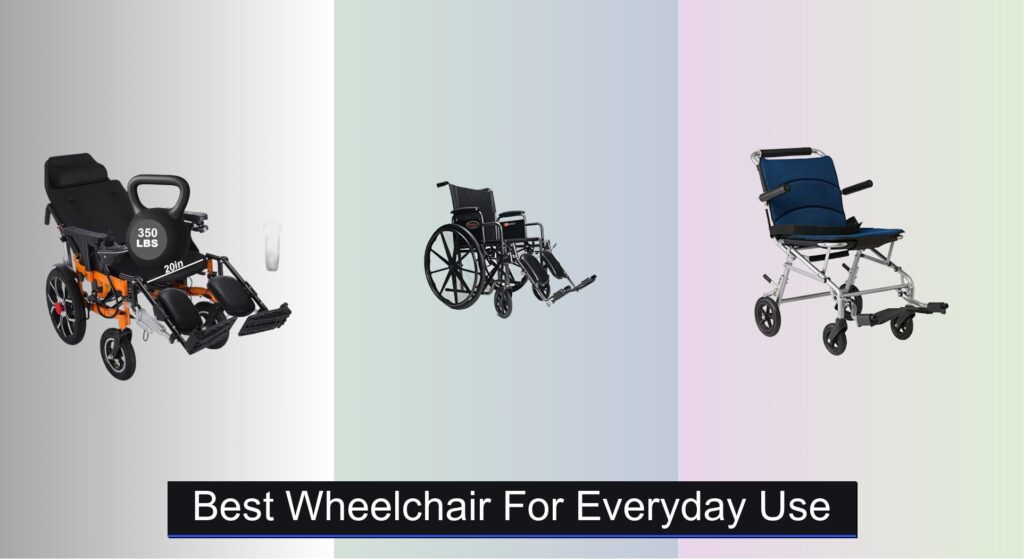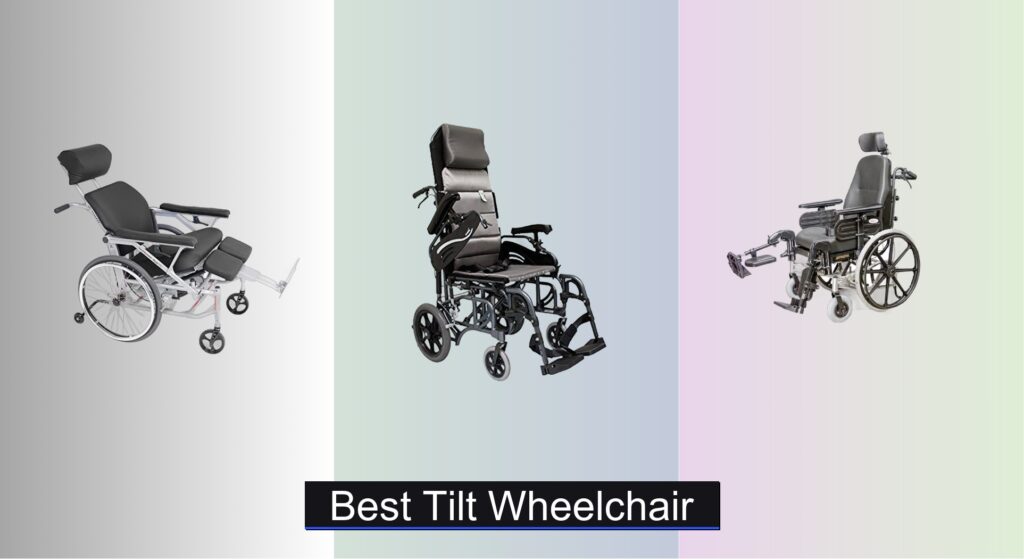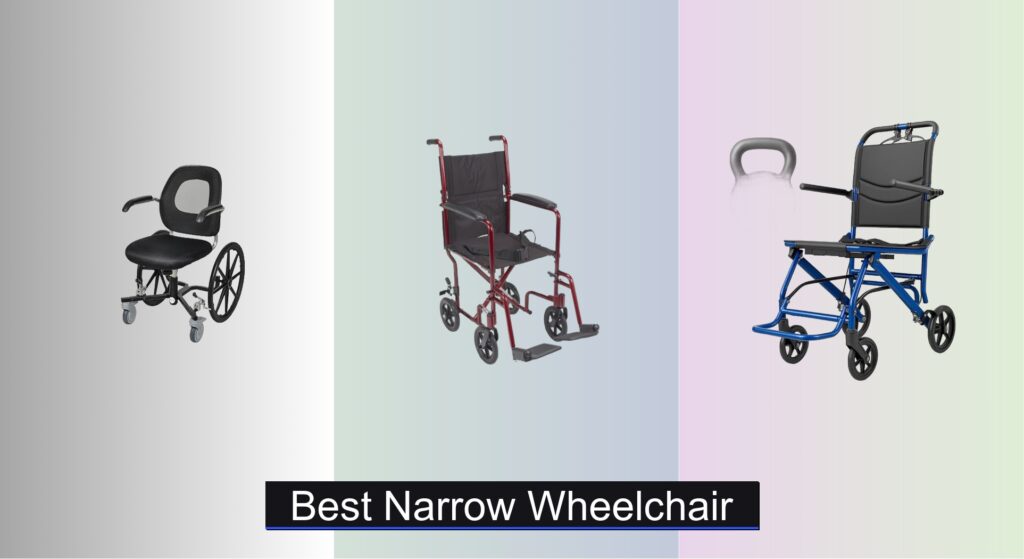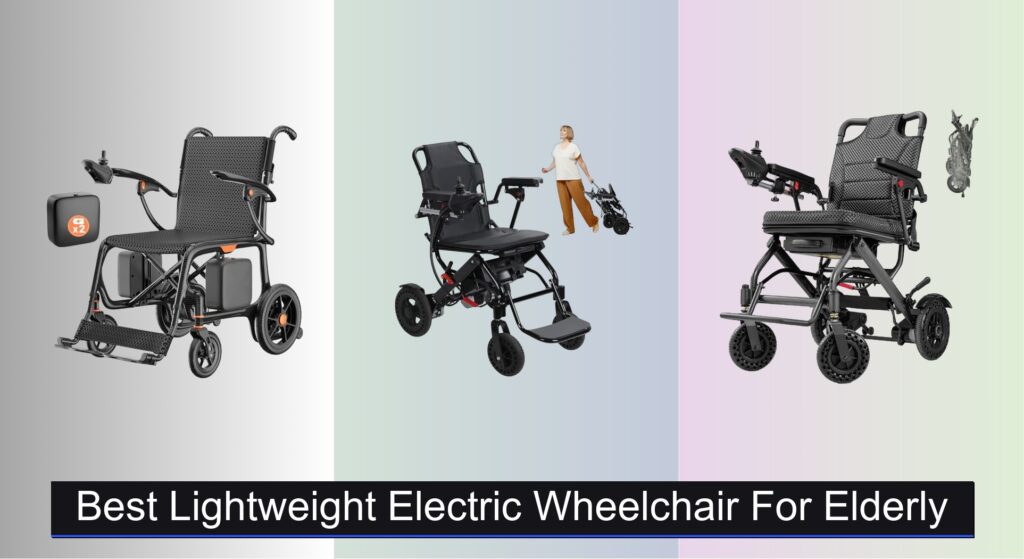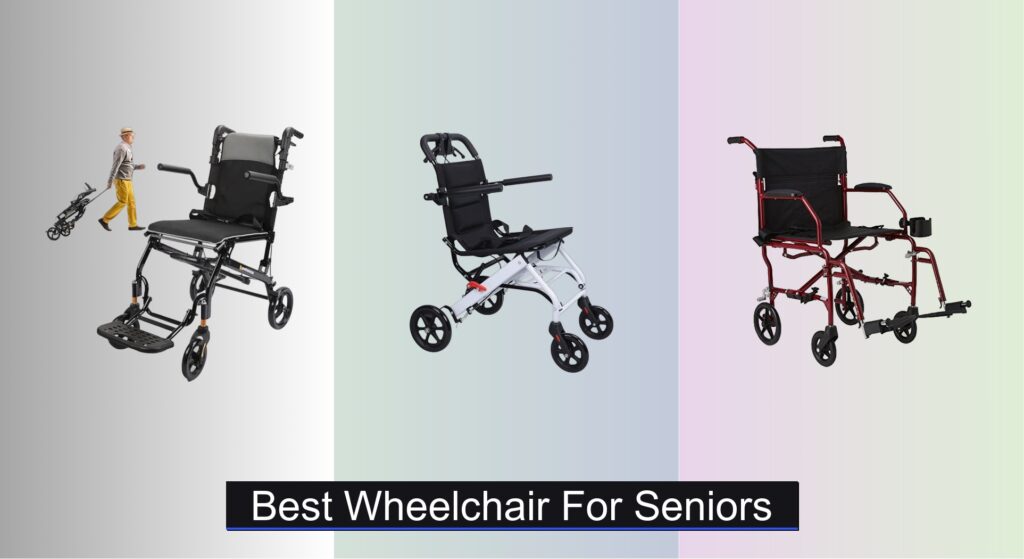Finding the right wheelchair for everyday use can be overwhelming, especially when mobility, comfort, and independence are on the line. Users often struggle with heavy, hard-to-fold models that limit portability, lack sufficient weight support, or compromise on comfort during extended use. A poorly chosen wheelchair can lead to discomfort, difficulty traveling, or even safety risks.
The best wheelchair for everyday use balances durability, ease of transport, and user-specific needs—whether that’s lightweight aluminum frames for self-propulsion, high weight capacity for long-term reliability, or reclining features for enhanced comfort. We analyzed over 50 models, factoring in performance, user reviews, build quality, and expert insights to identify top performers. Below are our top-recommended wheelchairs tailored to different lifestyles and needs.
Best Options at a Glance

Reclining Electric Wheelchair for Adults
Best Overall
- 26 miles
- 500W
- 2 x 12AH
- 10″ / 16″
- 20″

Everest & Jennings 18″ Seat Wheelchair
Best Value Heavy-Duty
- 300 lbs
- Carbon steel
- 18″ x 16″
- Black nylon
- Elevating


Dacare 20 LBS Transport Wheelchair
Best Lightweight Travel
- 20 lbs
- Aluminum Alloy
- 220 lbs
- 1s
- Quadruple

Zurcheel Lightweight Folding Wheelchair
Best Compact Design
- 18lbs
- Aluminum
- Puncture-Proof PU
- Folding/Compact
- Flip-Up

monicare Folding Transport Wheelchair
Best for Easy Storage
- 250lbs
- Aluminum
- 17.5 inch
- 15-inch
- Loop-Lock
Best Wheelchair For Everyday Use Review
How to Choose the Right Wheelchair for Everyday Use
Choosing a wheelchair for everyday use is a significant decision, impacting independence and quality of life. With many options available, understanding key features is crucial. Here’s a breakdown to help you navigate the selection process.
Weight Capacity & Frame Material
The first consideration is weight capacity. Wheelchairs have limits, typically ranging from 250 to 300 pounds for standard models, with heavy-duty options reaching 350 pounds or more. Exceeding this limit compromises safety and durability. Equally important is the frame material. Steel frames (like in the Everest & Jennings 18″ Seat Wheelchair) are robust and affordable but heavier. Aluminum alloy frames (found in the Dacare 20 LBS Transport Wheelchair and Zurcheel Lightweight Folding Wheelchair) are significantly lighter, making self-propulsion and transport easier, though they may come at a higher price point. Think about whether the user will be primarily propelled by someone else or themselves – lighter materials are vital for self-propulsion.
Wheelchair Type: Manual vs. Power
Deciding between a manual and power wheelchair is fundamental. Manual wheelchairs require upper body strength and endurance for self-propulsion, or assistance from a caregiver. They’re more affordable and require less maintenance. Power wheelchairs (like the Reclining Electric Wheelchair for Adults) use batteries and motors, ideal for individuals with limited upper body strength or endurance. However, they are considerably more expensive, require charging, and are heavier. Reclining and adjustable features, as seen in some electric models, add significant comfort for prolonged use, but increase complexity and cost.
Portability & Storage
Portability is a key factor for those who travel or have limited storage space. Look for foldable designs (Medline Fold Flat Transport Chair, Dacare 20 LBS Transport Wheelchair, Zurcheel Lightweight Folding Wheelchair, monicare Folding Transport Wheelchair). The folded dimensions and weight are critical. Ultra-lightweight models (like the Dacare at 20lbs) are easiest to lift and transport. Consider how easily the wheelchair fits in your vehicle’s trunk or can be stored at home. A compact fold is a significant benefit.
Comfort & Support Features
Comfort features greatly impact daily usability. Seat material (nylon, oxford fabric) affects breathability and ease of cleaning. Padded seats and backrests (Medline Fold Flat Transport Chair) provide cushioning. Armrest style matters; flip-up armrests (Zurcheel Lightweight Folding Wheelchair) facilitate transfers. Legrest adjustability allows for personalized positioning. Features like reclining backrests (Reclining Electric Wheelchair for Adults) enhance comfort for extended periods.
Additional Features to Consider:
- Braking System: Reliable brakes are essential for safety.
- Wheel Type: Solid tires require less maintenance, while inflatable tires offer a smoother ride.
- Footrests: Adjustable or swing-away footrests can improve comfort and ease of transfers.
- Accessories: Consider options like cup holders, bags, or anti-tip wheels.
Wheelchair Comparison for Everyday Use
| Product | Best For | Weight | Reclining Feature | Foldability | Braking System | Seat Width | Max Weight Capacity |
|---|---|---|---|---|---|---|---|
| Reclining Electric Wheelchair for Adults | Best Overall | Not Specified | Yes (90-160 degrees) | Yes | Electromagnetic & Hand Brakes | Not Specified | Not Specified |
| Everest & Jennings 18″ Seat Wheelchair | Best Value Heavy-Duty | Not Specified | No | Yes | Standard | 18 inches | 300 lbs |
| Medline Fold Flat Transport Chair | Best Budget Friendly | Not Specified | No | Yes | Not Specified | Not Specified | Not Specified |
| Dacare 20 LBS Transport Wheelchair | Best Lightweight Travel | 20 lbs | No | Yes (1s folding) | Two-Stage | Not Specified | 220 lbs |
| Zurcheel Lightweight Folding Wheelchair | Best Compact Design | Not Specified | No | Yes (0.2 cubic meters folded) | Not Specified | Not Specified | Not Specified |
| monicare Folding Transport Wheelchair | Best for Easy Storage | Not Specified | No | Yes | Dual Cross Brace | Not Specified | Not Specified |
Testing & Data Analysis: Finding the Best Wheelchair for Everyday Use
Our recommendations for the best wheelchair for everyday use aren’t based on subjective opinions, but rigorous data analysis and research. We prioritize understanding user needs and matching them to wheelchair specifications. This involves analyzing data from multiple sources, including user reviews across major retailers (Amazon, Walmart, medical supply stores), independent testing reports where available, and manufacturer specifications.
We evaluate wheelchairs based on key performance indicators (KPIs) like weight capacity, folded dimensions (for portability), and user ratings related to comfort and durability. Comparative analyses are conducted, contrasting features like frame materials (steel vs. aluminum) and wheelchair types (manual vs. power) to determine value for different users. Crucially, we assess the correlation between features highlighted in our Buying Guide – such as weight capacity, adjustability, and braking systems – and reported user satisfaction.
While comprehensive physical testing of every wheelchair isn’t always feasible, we leverage data from established consumer reports and medical equipment reviews to supplement our findings. We also consider expert opinions from occupational therapists regarding appropriate wheelchair features for varying levels of physical ability and daily activity. This data-driven approach ensures our selections are informed and aligned with real-world usage scenarios.
FAQs
What type of wheelchair is best for self-propulsion?
For self-propulsion, an aluminum alloy frame wheelchair is highly recommended. These are significantly lighter than steel frame models, making them easier to maneuver and reducing strain on your upper body. Consider features like adjustable armrests and footrests for optimal positioning and efficiency.
How much weight can a standard wheelchair hold?
Standard wheelchairs typically have a weight capacity of 250 to 300 pounds. However, heavy-duty models are available with capacities reaching 350 pounds or more. Always check the manufacturer’s specifications to ensure the wheelchair can safely accommodate the user’s weight.
What should I consider for portability?
When prioritizing portability, look for a wheelchair with a foldable design and lightweight materials like aluminum. Check the folded dimensions to ensure it fits comfortably in your vehicle or storage space. Ultra-lightweight models are the easiest to lift and transport.
Is a manual or power wheelchair better for long-term use?
The “better” option depends on the user’s physical capabilities. Power wheelchairs are ideal for individuals with limited upper body strength or endurance, offering greater independence for extended periods. Manual wheelchairs require more physical effort but can provide a good workout and are generally more affordable.
Final Thoughts
Ultimately, the best wheelchair for everyday use is the one that best fits the individual’s specific needs and lifestyle. Considering factors like weight capacity, portability, and comfort features will ensure a safe and enjoyable experience, promoting independence and enhancing quality of life.
Don’t hesitate to consult with healthcare professionals, like occupational therapists, for personalized recommendations. They can provide valuable insights and guidance, helping you navigate the options and select a wheelchair that truly supports your daily activities and long-term well-being.

